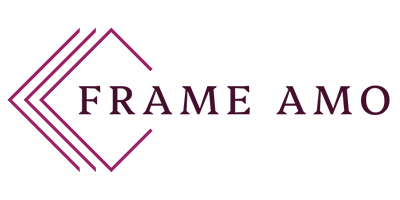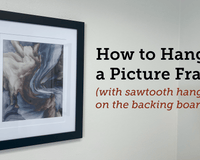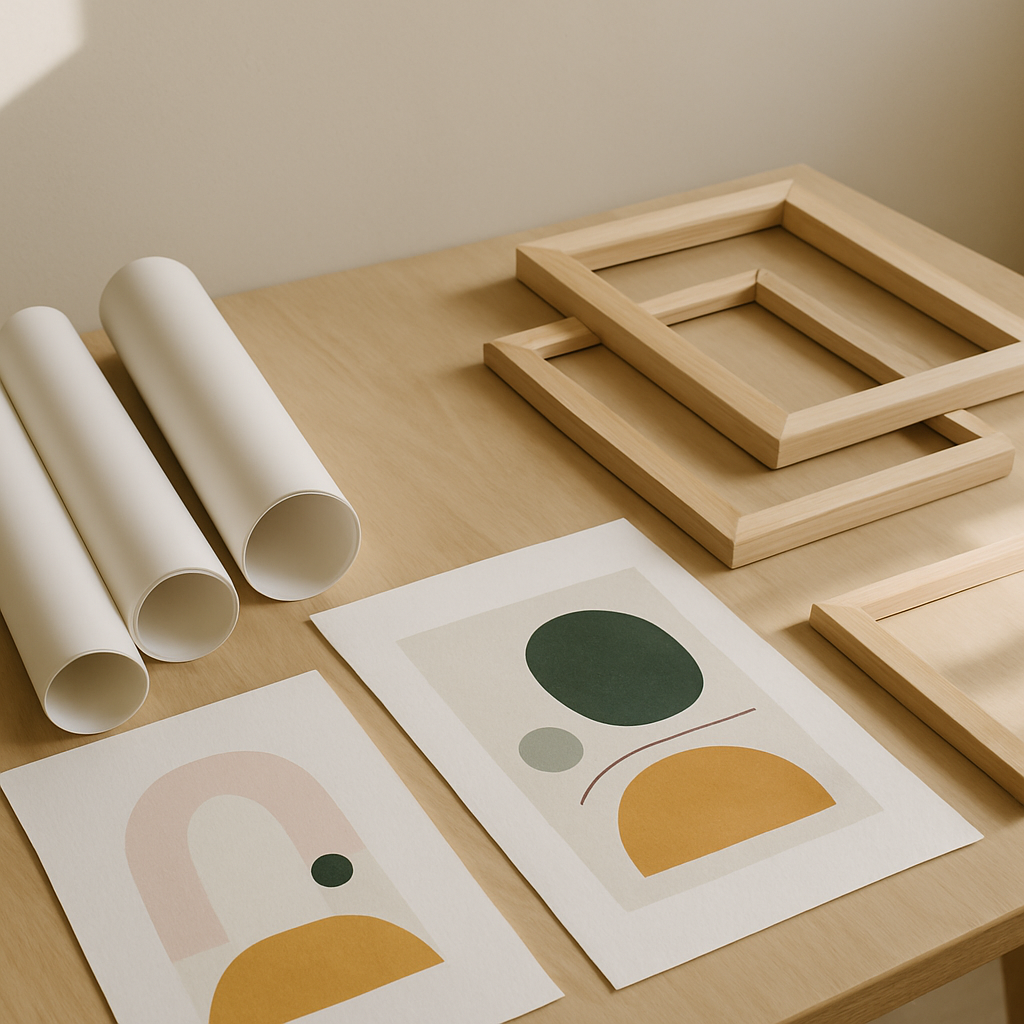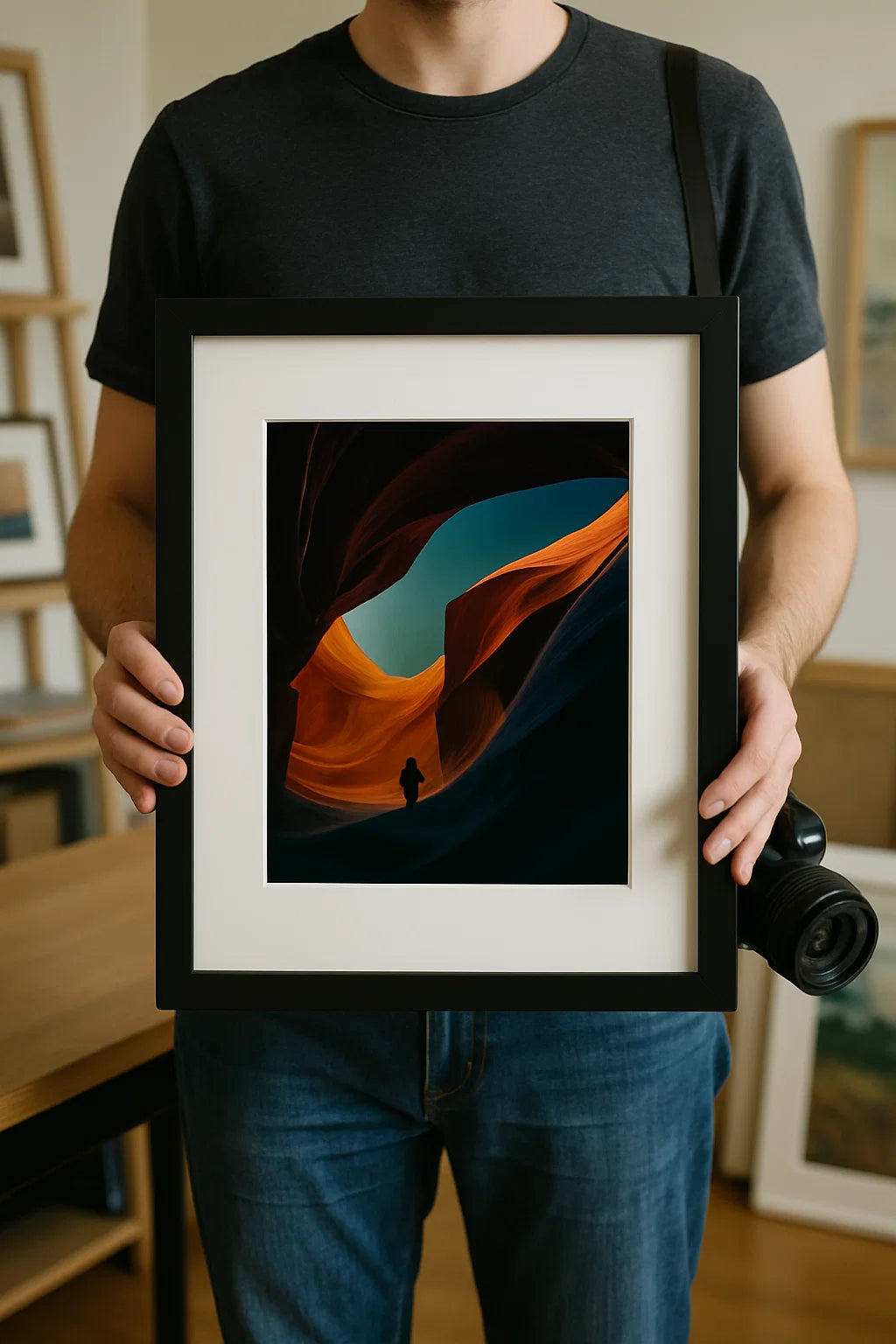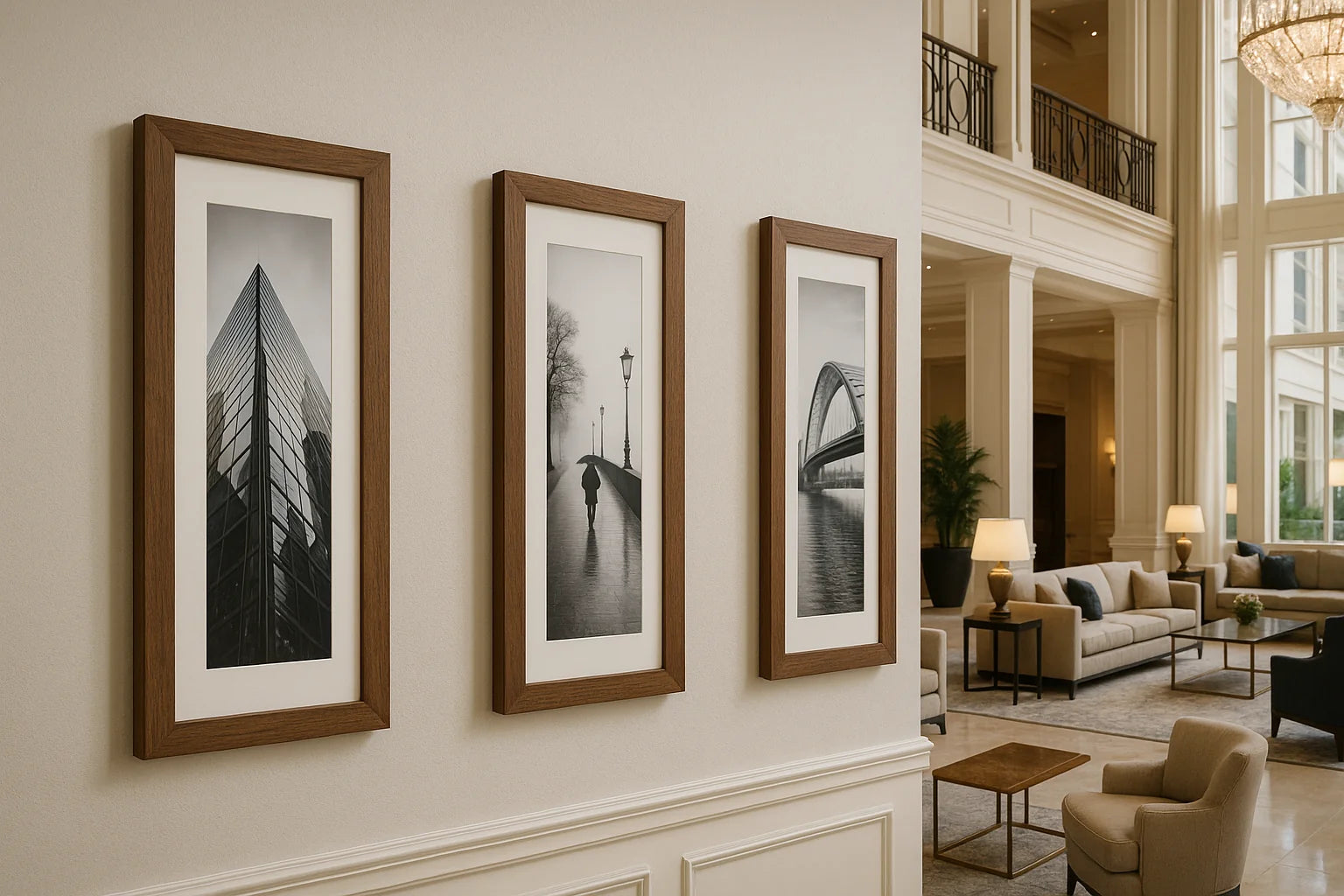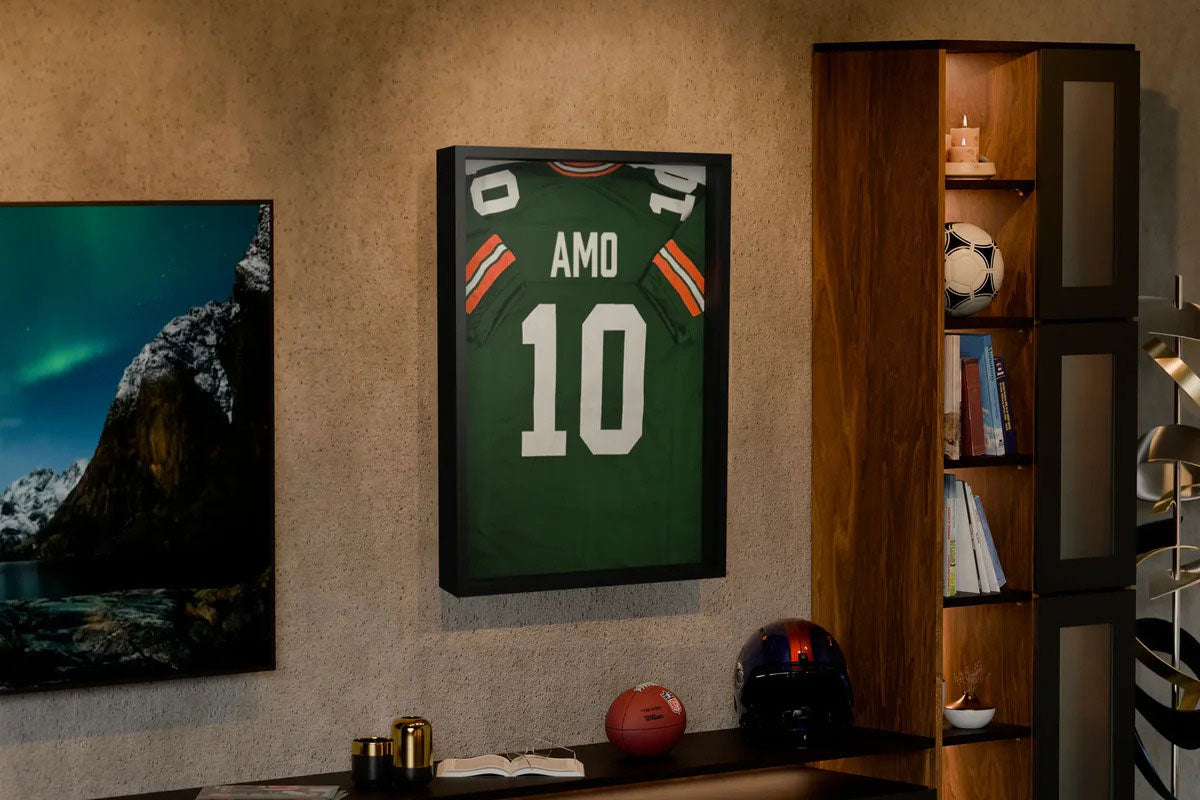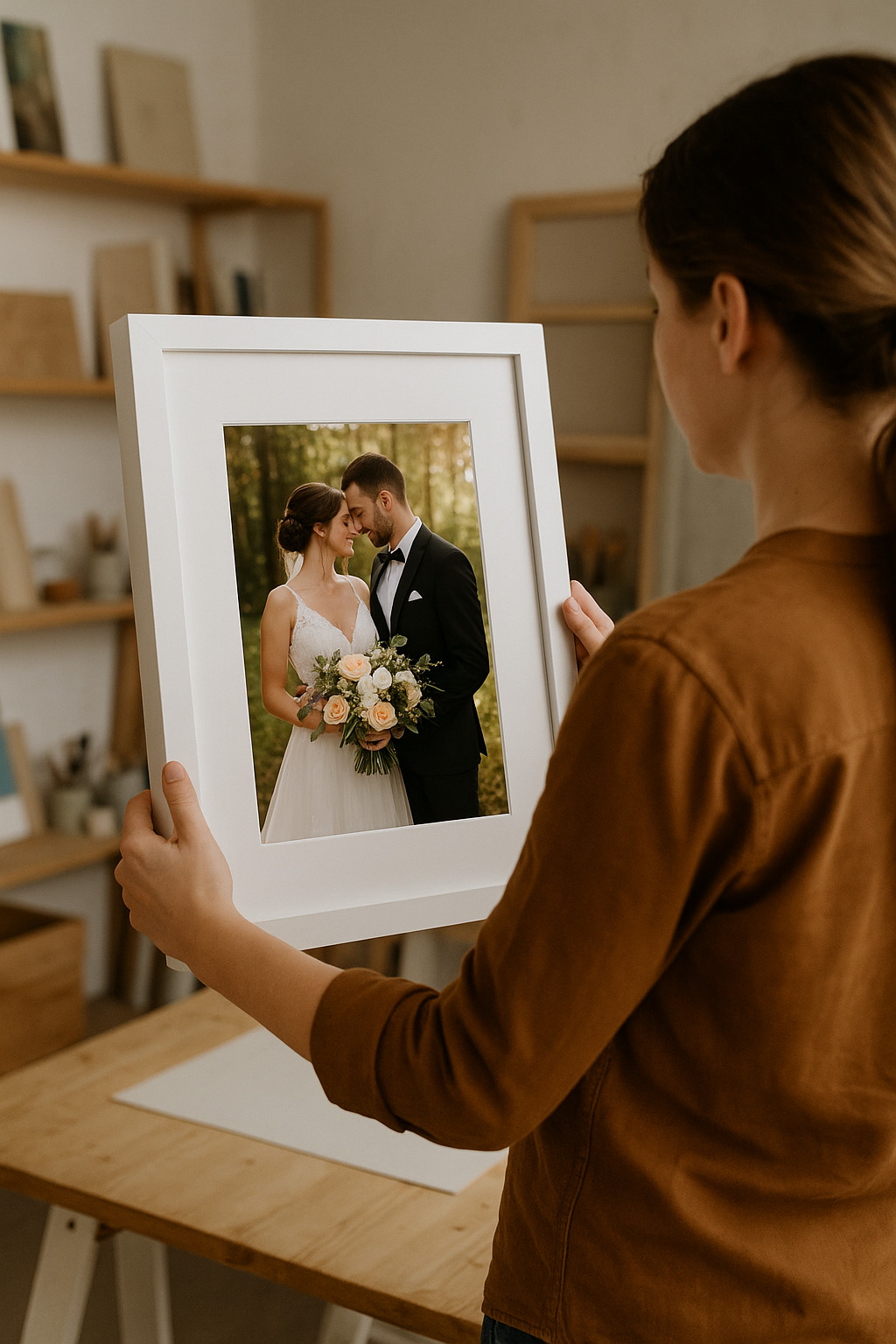Understanding the right artwork size is key when it comes to framing your photos, prints, and other pieces of art. At Frame Amo, we want to help you make informed decisions by providing a comprehensive guide to the most common artwork sizes. Whether you're framing personal photographs, family portraits, or fine art prints, this guide will help you understand what typical artwork sizes are and what they usually correlate to.
What is Aspect Ratio?
Before we dive into specific artwork sizes, let’s first define aspect ratio. The aspect ratio refers to the relationship between the width and height of your artwork. It’s expressed as two numbers separated by a colon (e.g., 4:3, 2:3). The aspect ratio tells you how wide or tall your piece is in relation to its dimensions, and it helps determine how it will fit in a frame.
For example:
-
A 4x6 inches photo typically has a 2:3 aspect ratio.
-
A 5x7 inches photo has a 5:7 aspect ratio.
-
An 8x10 inches photo has a 4:5 aspect ratio.
Understanding the aspect ratio of your artwork helps you make sure the size fits well within a frame, preventing issues like awkward cropping or too much empty space. See the image below for the most common aspect ratios used (typically for photography or videography).

Common Artwork Sizes and What They Typically Represent
Now, let’s explore the most common artwork sizes and what types of artwork or photographs these sizes are typically used for. Knowing these common sizes will help you recognize what to expect from the artwork you're handling or planning to display.
1. 4x6 Inches
What it Typically Represents:
-
Standard photos
-
Small personal photographs, travel photos, or event snapshots
Aspect Ratio: 2:3
The 4x6 inches size is the most common and traditional size for photographs. It’s often used for standard personal photos, family pictures, or casual shots from vacations and celebrations. This size works well for photo albums, frames, and small displays.
For a detailed guide on how to frame your 4x6 inches artwork, check out our full guide here.
2. 5x7 Inches
What it Typically Represents:
-
Portraits
-
Wedding photos, engagement pictures, and professional portraits
Aspect Ratio: 5:7
The 5x7 inches size offers a bit more space than a 4x6 inches photo, making it a popular choice for portrait photography or more formal images. It’s commonly used for framing photos of people or pets, and it’s a great size for special occasions like weddings or anniversaries.
For framing tips on your 5x7 inches artwork, read our guide here.
3. 8x10 Inches
What it Typically Represents:
-
Family portraits
-
Certificates, smaller artwork, and personal photos
Aspect Ratio: 4:5
The 8x10 inches size is a versatile option used for family portraits, special event photos, and smaller artwork prints. This size provides a good balance between a larger display and a smaller, more manageable piece of artwork. It’s often chosen for both horizontal and vertical photos.
Find out how to frame your 8x10 inches artwork by visiting our guide here.
4. 8.5x11 Inches
What it Typically Represents:
-
Documents
-
Legal documents, certificates, and letters
Aspect Ratio: 1:1.29
The 8.5x11 inches size is the standard for letter-sized prints, documents, or smaller artwork prints. It’s commonly used for certificates, degrees, and smaller printed artwork like prints or posters that are close to the size of a typical letter.
For detailed advice on framing your 8.5x11 inches artwork, visit our full guide here.
5. 11x14 Inches
What it Typically Represents:
-
Mid-sized photos and art prints
-
Professional photography, award certificates, and larger prints
Aspect Ratio: 5:7
The 11x14 inches size is perfect for larger portraits and mid-sized art prints. This size is commonly used for professional photography and framing artwork that requires a little more room but isn’t too large. It’s ideal for displaying photos or artwork in a more prominent way.
For framing your 11x14 inches artwork, check out our guide here.
6. 12x18 Inches
What it Typically Represents:
-
Larger prints
-
Event posters, art prints, and custom artwork
Aspect Ratio: 2:3
The 12x18 inches size is often used for larger prints, including event photos or art prints. It’s a great size for showcasing posters or special images that require more space but are not quite as large as larger display pieces.
For detailed guidance on framing your 12x18 inches artwork, refer to our guide here.
7. 16x20 Inches
What it Typically Represents:
-
Large family portraits
-
Fine art prints, landscape photography, and larger artwork
Aspect Ratio: 4:5
The 16x20 inches size is commonly used for larger family portraits or high-quality fine art prints. It’s a popular size for displaying landscape photography, as it provides ample space for the image to shine while still being manageable for most display spaces.
Discover how to frame your 16x20 inches artwork by reading our guide here.
8. 18x24 Inches
What it Typically Represents:
-
Posters and large prints
-
Artwork, advertising posters, and exhibition prints
Aspect Ratio: 3:4
The 18x24 inches size is ideal for posters, large art prints, or exhibition photography. It’s a common choice for art galleries and commercial spaces where artwork needs to be displayed prominently without overwhelming the space.
For framing tips on your 18x24 inches artwork, check out our guide here.
9. 22x28 Inches
What it Typically Represents:
-
Gallery prints
-
Large-scale posters and fine art photography
Aspect Ratio: 11:14
The 22x28 inches size is often used for gallery-style prints or large-scale fine art photography. It provides an elegant way to showcase your favorite pieces while offering a professional, polished look that’s often used in exhibitions.
For a full guide on framing your 22x28 inches artwork, click here.
10. 24x36 Inches
What it Typically Represents:
-
Large-scale posters and art
-
Commercial artwork, movie posters, and large photographs
Aspect Ratio: 2:3
The 24x36 inches size is perfect for oversized posters, large artwork, or commercial prints. It’s frequently used for movie posters, fine art exhibitions, or large photographs in spaces where the artwork is intended to make a bold statement.
Learn more about how to frame your 24x36 inches artwork in our guide here.
Understanding Artwork Sizes
By now, you should have a clearer understanding of the most common artwork sizes and how they correlate to the types of artwork or photos they’re typically used for. Understanding artwork sizes helps you better visualize how a piece will look in your space and ensures it fits perfectly in the right frame.
